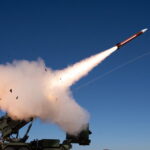
A new Defense Department report on securing critical defense supply chains prioritizes kinetic weapons, energy storage and batteries, metals and composites used in manufacturing tools, and microelectronics, outlining the challenges and vulnerabilities with each focus area and provides an array of recommendations to address these challenges and improve domestic and partner capabilities. The report’s focus on kinetic capabilities, which includes hypersonic weapons, a priority for DoD, highlights the fact that while there is no commercial market for kinetic weapons, they…

 By
By 











